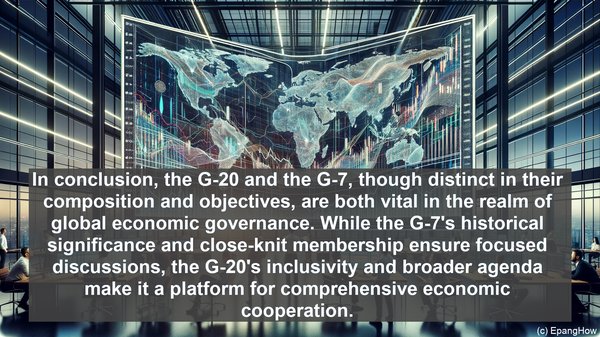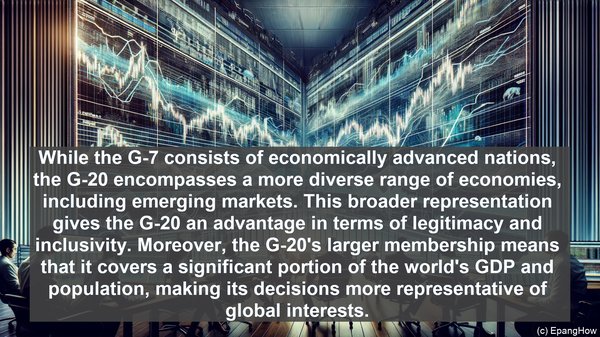Introduction: The Importance of Global Economic Governance
Hello everyone, welcome to our article. In today’s interconnected world, economic decisions made by one country can have far-reaching consequences. To ensure stability and growth, international cooperation becomes imperative. This is where global economic governance comes into play. Among the various forums, the G-20 and the G-7 stand out as key players. Let’s begin by understanding their core differences.

The G-7: A Historical Perspective
The G-7, initially known as the G-6, was formed in 1975 as an informal gathering of finance ministers from the United States, United Kingdom, Germany, France, Italy, and Japan. Canada joined the group a year later, making it the G-7. The primary objective was to facilitate dialogue on pressing economic issues. Over time, the G-7 evolved into an annual summit, with leaders from member countries participating.
The G-20: A Broader Representation
The G-20, on the other hand, came into existence in 1999, in the aftermath of the Asian financial crisis. It comprises 19 countries, including major economies like China, India, Brazil, and Russia, along with the European Union. The G-20’s expanded membership reflects the changing global economic landscape, ensuring a more inclusive approach to decision-making.
Membership: Size vs Influence
While the G-7 consists of economically advanced nations, the G-20 encompasses a more diverse range of economies, including emerging markets. This broader representation gives the G-20 an advantage in terms of legitimacy and inclusivity. Moreover, the G-20’s larger membership means that it covers a significant portion of the world’s GDP and population, making its decisions more representative of global interests.

Objectives: From Crisis Management to Long-term Policies
The G-7, historically, has focused on crisis management. During times of economic turmoil, the group has played a crucial role in coordinating responses and stabilizing markets. In contrast, the G-20’s mandate extends beyond crisis management. It aims to foster sustainable and balanced growth, address systemic issues, and promote financial stability. This broader agenda reflects the G-20’s role as a platform for long-term economic cooperation.
Impact: From Recommendations to Action
While the G-7’s recommendations hold significant weight, it is the G-20 that often translates them into action. Given its larger membership and representation, the G-20’s decisions have a higher likelihood of being implemented by member countries. This ability to drive policy changes is a testament to the G-20’s influence in shaping the global economic landscape.
